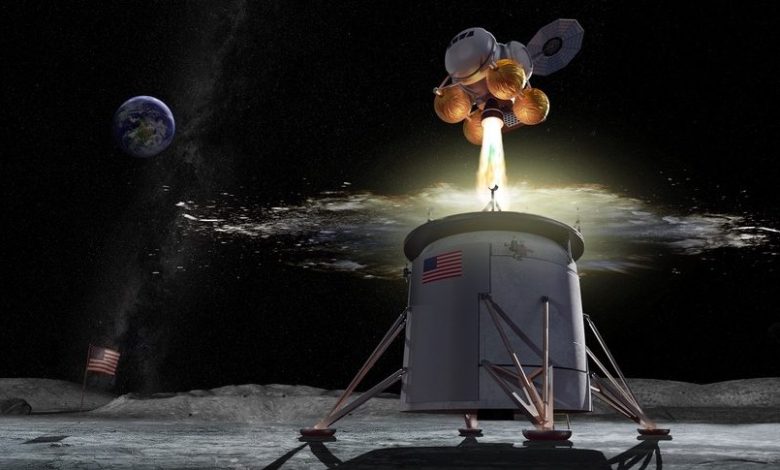NASA’s Ambitious Plans to Return Humans to the Moon and Establish a Lunar Base

NASA is embarking on a bold new era of lunar exploration with the Artemis program. The ambitious goals include landing the first woman and next man on the Moon by 2025 and establishing a sustained long-term human presence on and around the Moon by the end of the decade.
Why Return to the Moon Now?
NASA is motivated to get astronauts walking on the lunar surface once again for the first time since 1972. This time, the agency plans to build a Artemis Base Camp that allows for extended stays rather than short Apollo-style visits. The rationale includes gaining experience with deep space logistics and testing technologies needed for an eventual human mission to Mars in the 2030s.
Science
There is still much to uncover scientifically about Earth’s nearest neighbor including learning about the origins of water and other volatile material on the Moon. Astronauts will be able to conduct more advanced geology experiments across broader lunar terrain.
Develop New Technical Capabilities
NASA views returning to the Moon as a training ground and stepping stone for longer duration crewed trips to Mars. The lunar soil itself could even provide rocket fuel and materials supporting deep space voyages.
Economic Opportunities
Establishing an enduring human presence on the Moon creates economic community opportunities from potential mining for lunar resources to increased commercialization in low Earth orbit. NASA also hopes to foster global collaboration as international partners participate.
The First Artemis Missions (2024-2025)
If schedules stay on track, NASA plans to launch the first crewed Artemis flight in 2024 aboard the Orion spacecraft and Space Launch System (SLS) rocket followed by a crewed lunar landing mission in 2025.
Artemis I
Planned for no earlier than May 2024, Artemis I will be an uncrewed test flight of the Orion capsule and SLS Block 1 rocket. The mission will involve a flyby of the Moon and last 20-25 days total.
Artemis II Crewed Flight Around the Moon
Targeting 2024 as well, Artemis II will have astronauts on board as Orion completes a lunar flyby mission of about 10 days. It represents the first crewed deep space mission since Apollo.
Artemis III Crewed Moon Landing
This flight is scheduled for 2025 with the explicit goal to land “the first woman and first person of color” on the lunar surface using the Human Landing System currently in development. Two astronauts will spend 6 and half days on the Moon.
Building a Lunar Base Gateway
Part of the long term plan includes constructing the Lunar Gateway – a space station in orbit around the Moon to serve as communication hub, science lab, short term habitation module for astronauts, and holding area for rovers and other cargo.
Logistics and Transfer
The lunar Gateway provides key support for sustainable operations on the lunar surface. It allows for transferring crew and payloads between Orion ships and landing vessels as well enabling communication relays.
Constructs like airlocks, small habitats, andmoon hopper vehicles stowed at the Gatewaycould also enable longer astronaut stays than allowed by cramped Orion crew capsules alone. Resupply missions can regularly replenish resources.
Establishing a Permanent Moon Base
NASA’s ultimate goal for Project Artemis reaches beyond 2028 with plans to develop a lasting Moon base at the lunar South Pole. This Artemis Base Camp could support crew rotations analogous to the International Space Station. Robotic precursors first need to confirm ideal sites have access to critical resources like water ice.
Potential Activities and Goals
A lunar base opens possibilities for astronauts to conduct expanded science experiments, test capabilities for long duration deep space travel, assess potential utilization of lunar resources, and more over multi-month human occupation.
Challenges and Next Steps
Significant investments, commercial partnerships, and development of capabilities like lunar terrain vehicles, high bandwidth communication, subsurface mapping tools, and surface power generation are still needed to enable a thriving home on the Moon that can host rotating crews.
Overcoming Hurdles and Criticism
Ambitious Moon 2024 goals have already suffered delays with a recent NASA inspector general report casting doubt on timelines given consistently underfunded budgets. Some space policy experts also critique the program as representing dated strategies rather than focusing on more sustainable space activities like satellite servicing to benefit people on Earth.
However, the space agency believes major obstacles from delays in spacesuit, lander, and rocket readiness to established high confidence in programs can mitigated by setting realistic timetables and increased funding. Congressional support for Artemis continues on a bipartisan basis.
The Future of Deep Space Exploration
While the roadmap to regular lunar visits and an Artemis Base Camp faces plenty of challenges, NASA views Moon missions as the dress rehearsal for eventual human trips to Mars in the 2030s.
Martian Horizon Goal
Gaining operational experience safely living and working for extended periods on another world builds competence to mount a future multi-year round trip human mission to Mars.
Legacy of Apollo
Project Artemis propels a new generation to walk where Apollo astronauts last left off decades ago while marshaling talent and imagination to benefit life on Earth. Just as bold 1960s NASA investments drove widespread tech innovation, current lunar ambitions can seed new economic growth.
Though the Moon and Mars present substantial dangers, humanity’s restless spirit of exploration beckons us to worlds beyond our cradle. By launching Project Artemis, NASA seeks towrite the next thrilling chapter of spaceflight showing anything is possible through vision and ingenuity. The night sky lights a path forward if we dare to take the first steps.









